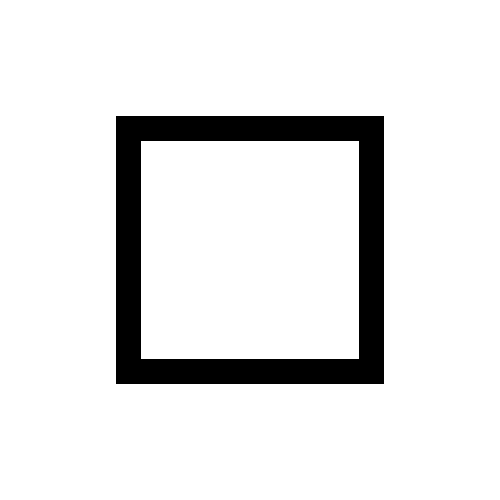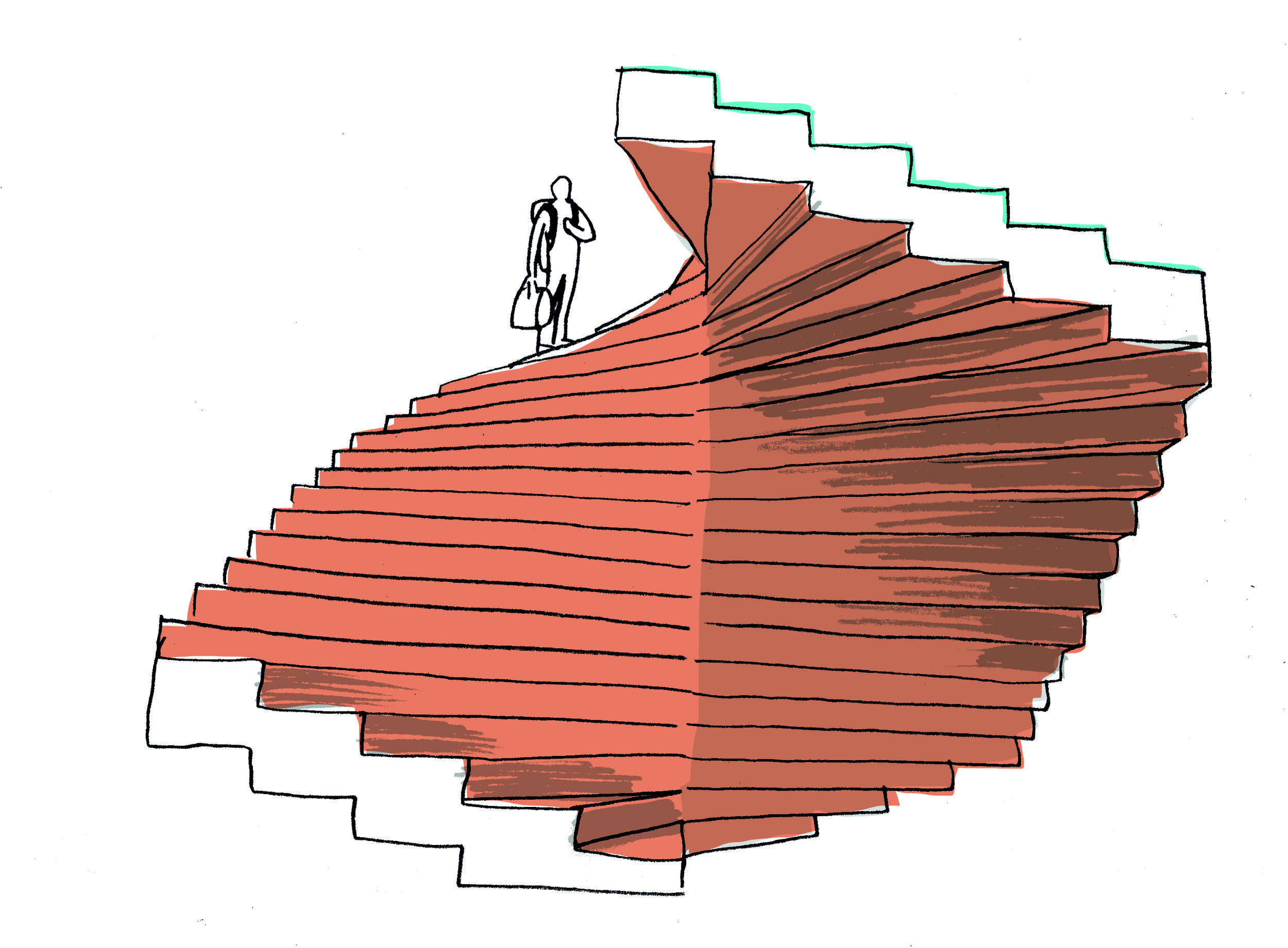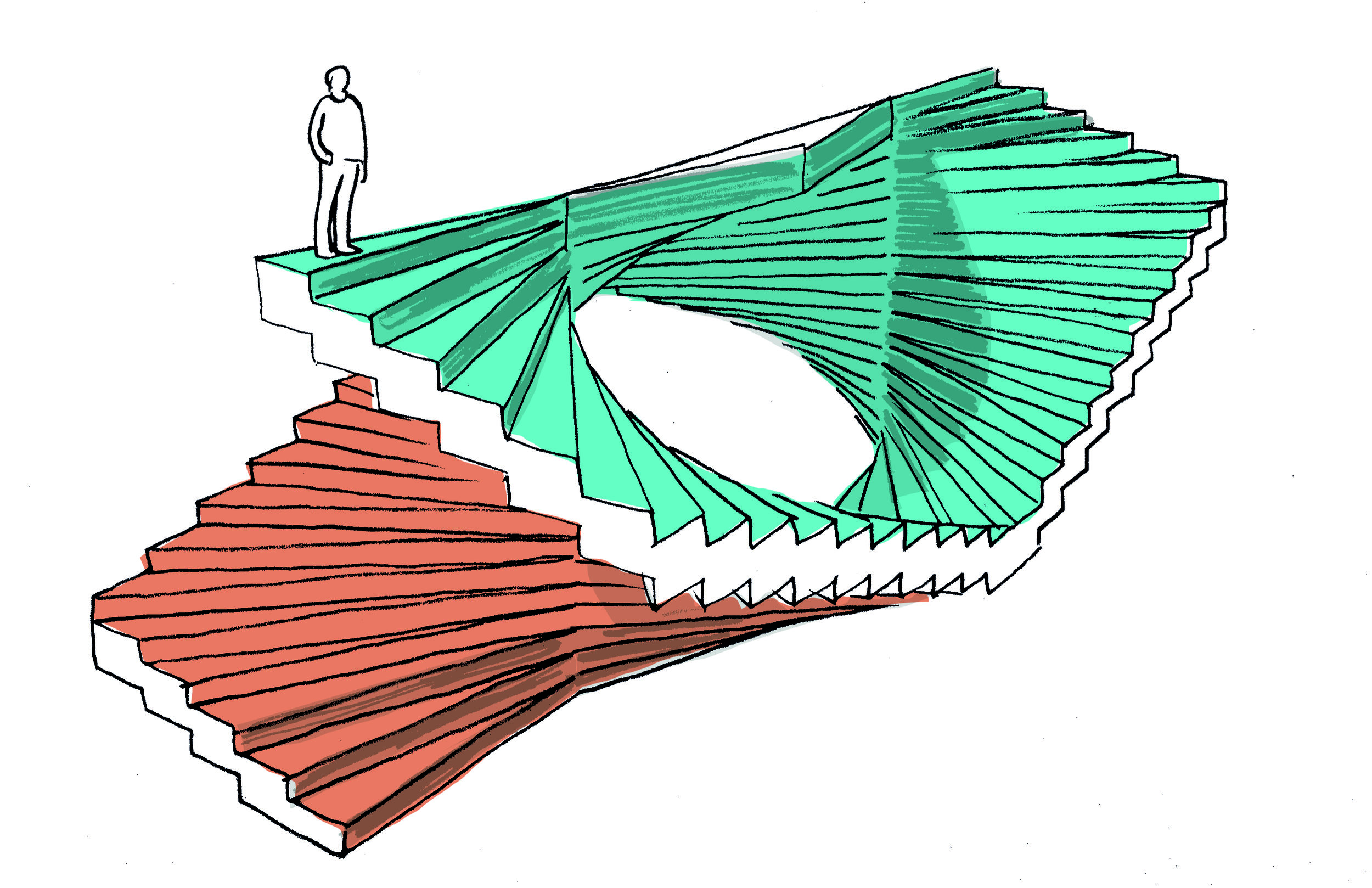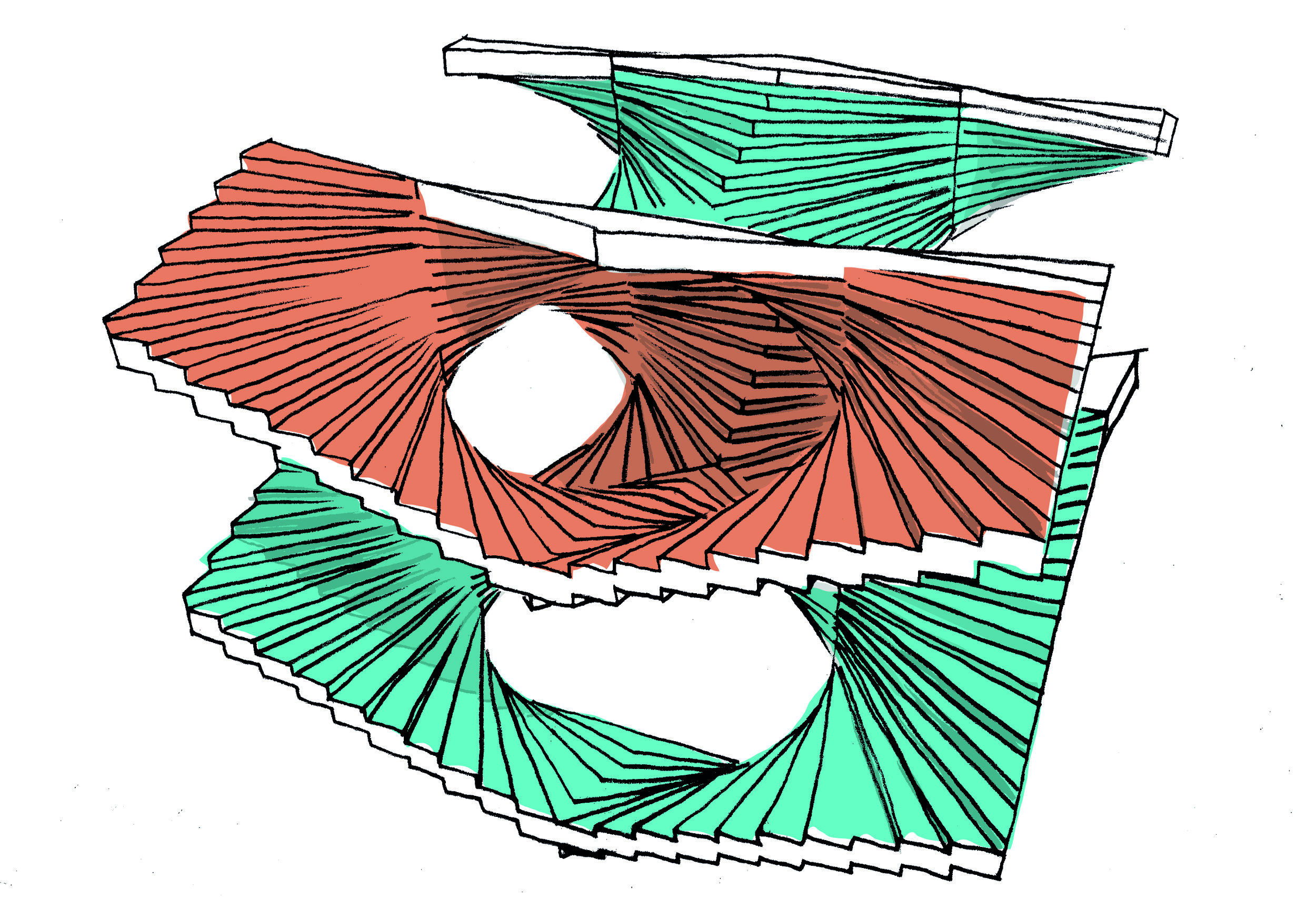
StrangerStairs
During a studio in my second Master year at the University of Liège, I started looking after a vertical circulation that could contain two distinct flux of people. At the end, the proposition was forgotten due to major design shifts. This is a small post retracing the work and the research about a special kind of stairs.
In the main studio of my second year of Master, my project combined a lab for ground decontamination by plants and a museum of steel industry, as a reminder of the history of the town.
The project itself doesn't really use Grasshopper as it is sadly still rejected by most of the teachers I’ve had. That is why we'll go directly to the interesting part of the project : a small research about stairs that could combine two different circulations without merging them, as the next schema illustrates, where parametric work has been involved.

The first orientation of this research started directly on the creation of stairs using flow lines of a surface. In Grasshopper, a little plugin called FlowL gives us the ability to draw 2D and 3D lines on surfaces. With elevations given to those lines, a rheotomic surface is created.
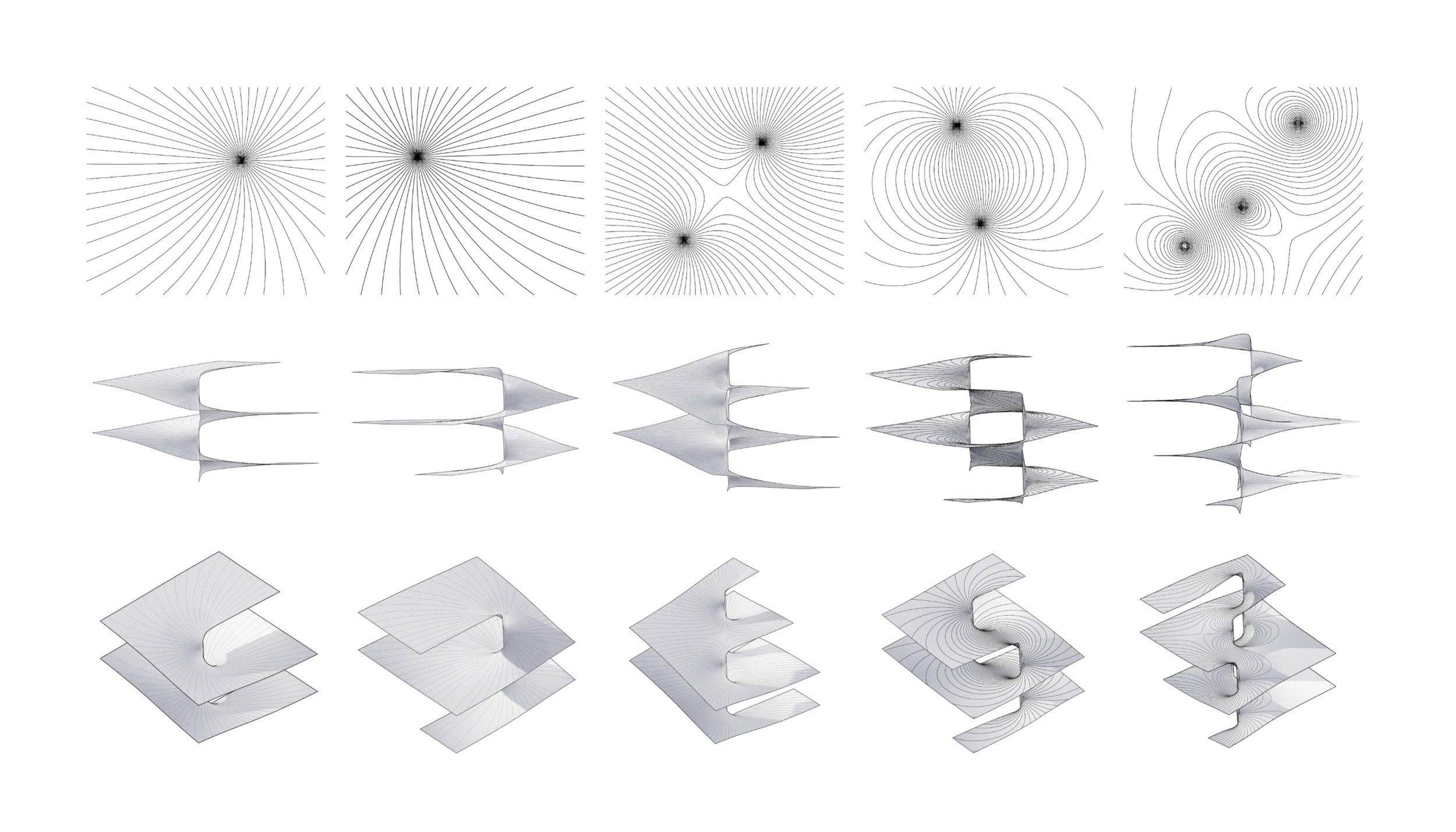
After some tries, some strangely looking stairs started to take form. But the actual aim of stairs dealing with two types of never-meeting circulations was not achievable this way.
A friend of mine then reminded me about the very old french project "Castel of Chambord", so I started digging again.
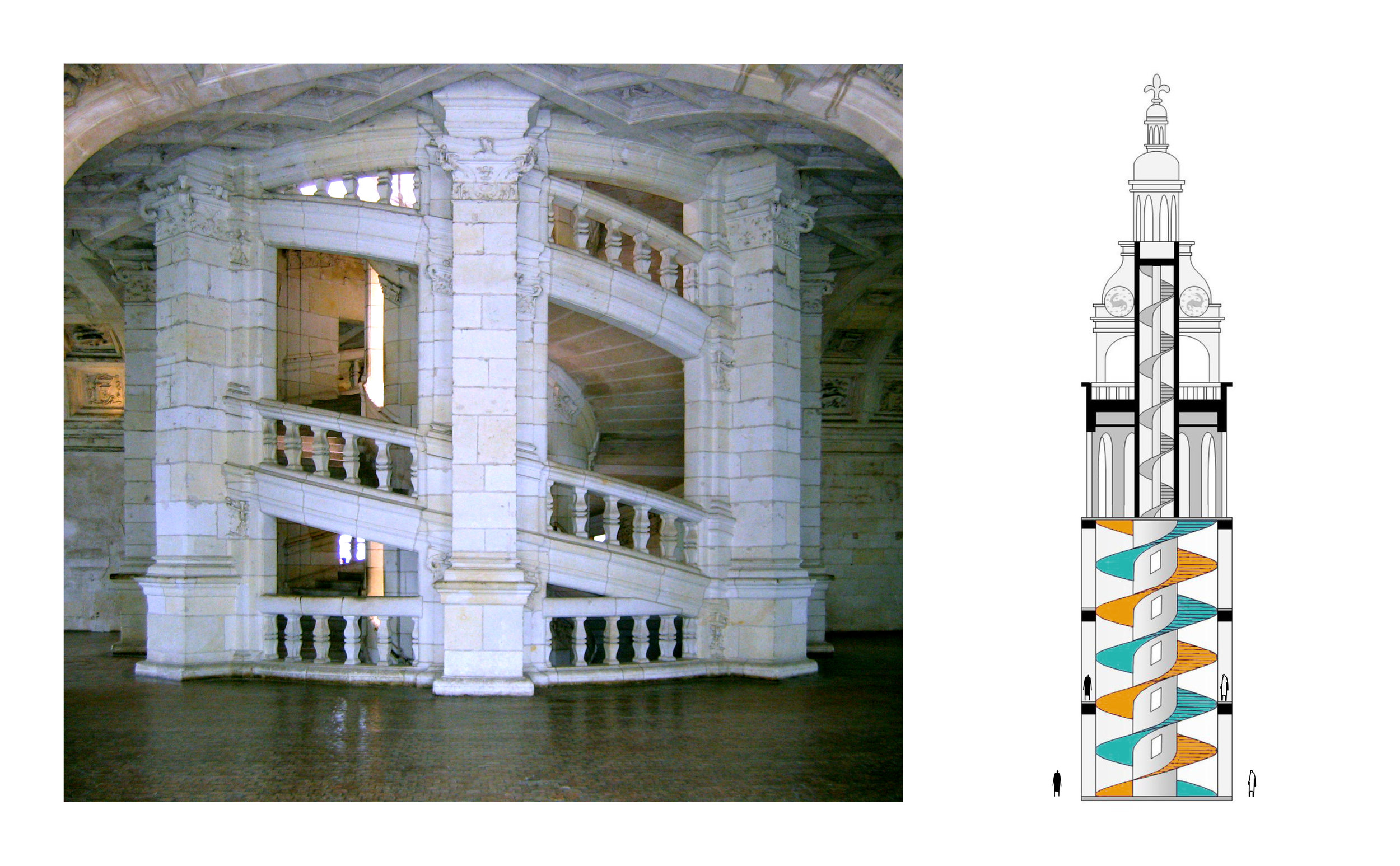
Château de Chambord - 1519
In comparison to the previous models done, we can see that this staircase only uses a double helicoid surface instead of a simple one, giving the ability of dealing with two never meeting circulations (in this case aristocracy and slaves).
The next schema shows the differences between a simple helicoid (close as previous models) and a two helicoid surface.

Mission complete.
Sadly, as long as this little research went on, the project faced rather big changes, and this kind of staircase wasn't required anymore. Although, I wanted to see an actual staircase of this work, and see a little bit more what could be done with it.
The following documents show some 3D drawings of combining modules, and a GIF showing how a four module combination is built.
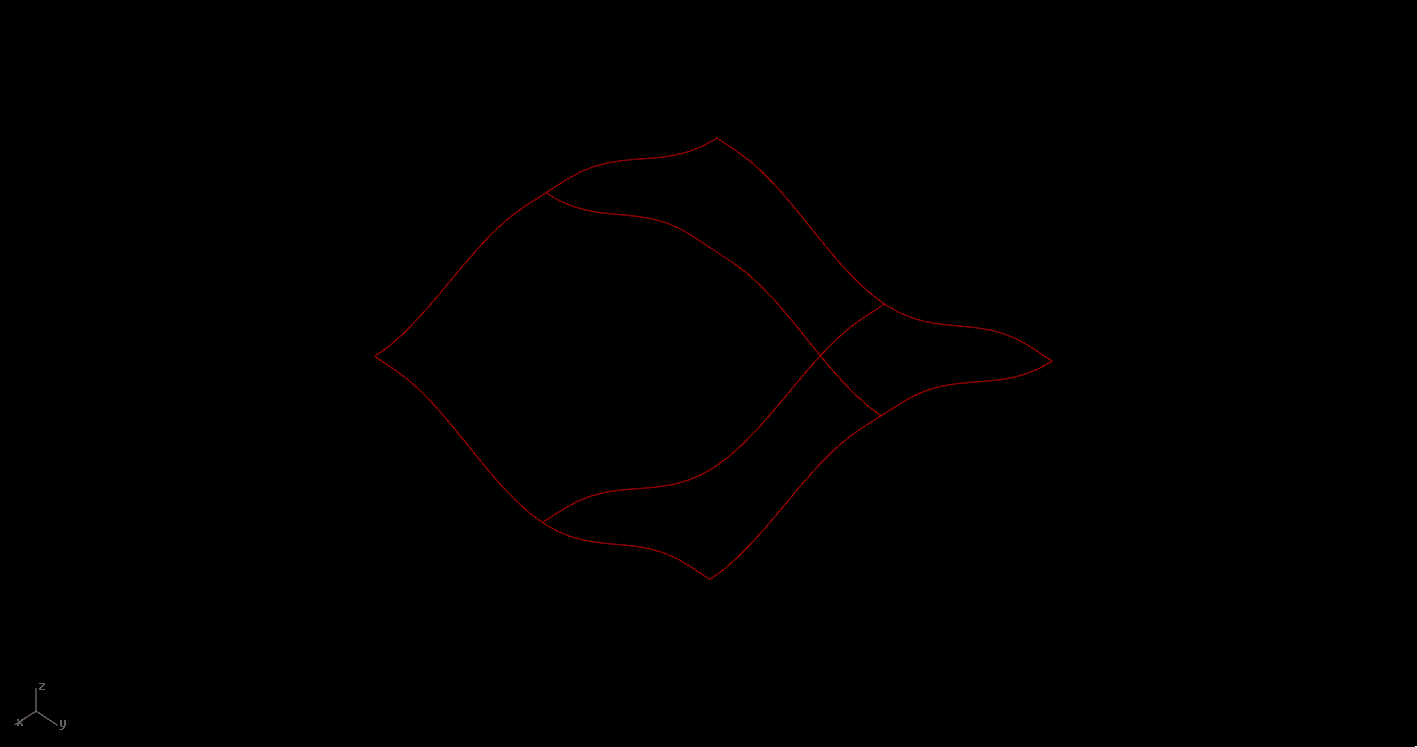
Antoine -
